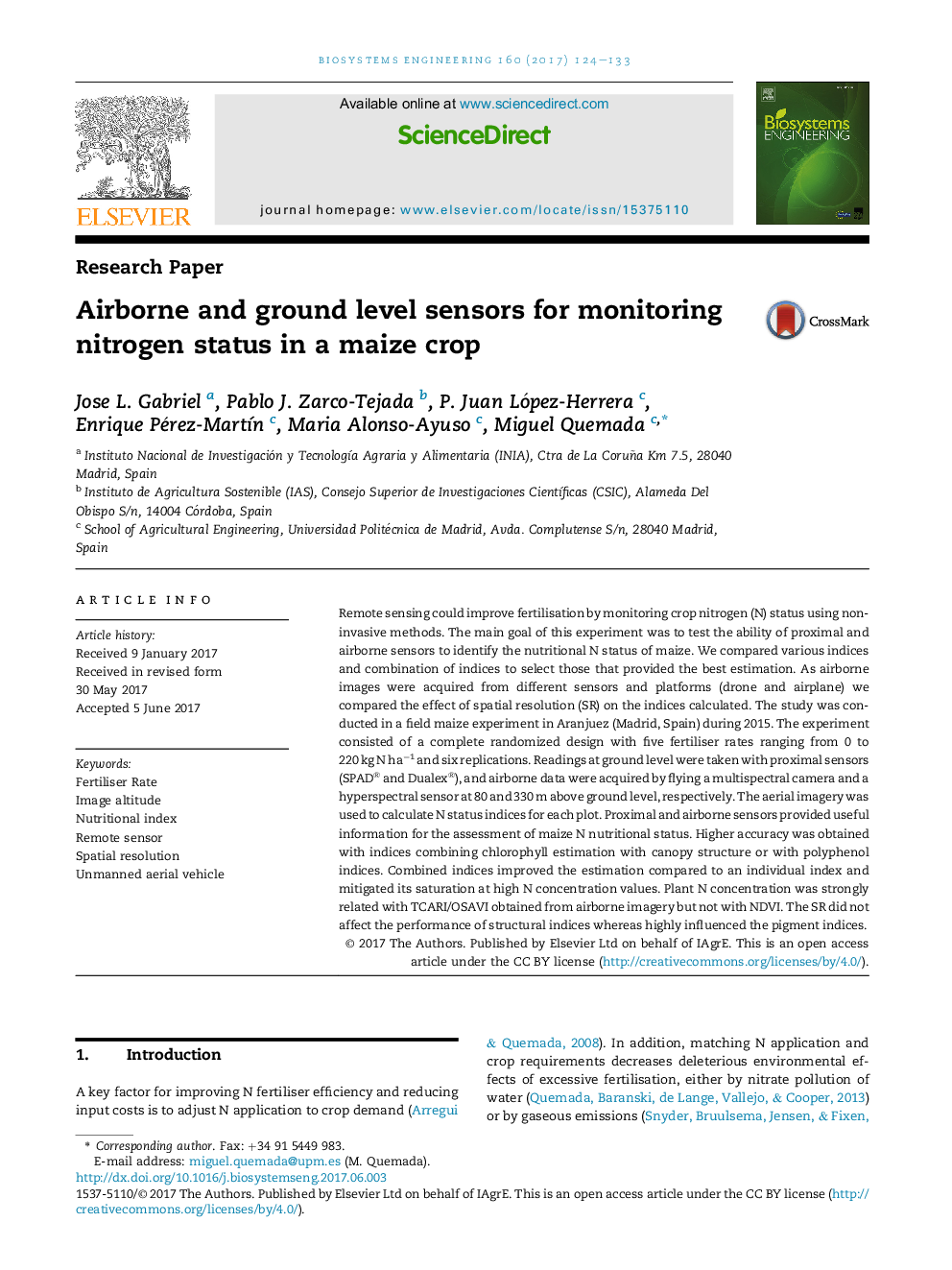| Article ID | Journal | Published Year | Pages | File Type |
|---|---|---|---|---|
| 5471819 | Biosystems Engineering | 2017 | 10 Pages |
Abstract
Remote sensing could improve fertilisation by monitoring crop nitrogen (N) status using non-invasive methods. The main goal of this experiment was to test the ability of proximal and airborne sensors to identify the nutritional N status of maize. We compared various indices and combination of indices to select those that provided the best estimation. As airborne images were acquired from different sensors and platforms (drone and airplane) we compared the effect of spatial resolution (SR) on the indices calculated. The study was conducted in a field maize experiment in Aranjuez (Madrid, Spain) during 2015. The experiment consisted of a complete randomized design with five fertiliser rates ranging from 0 to 220 kg N haâ1 and six replications. Readings at ground level were taken with proximal sensors (SPAD® and Dualex®), and airborne data were acquired by flying a multispectral camera and a hyperspectral sensor at 80 and 330 m above ground level, respectively. The aerial imagery was used to calculate N status indices for each plot. Proximal and airborne sensors provided useful information for the assessment of maize N nutritional status. Higher accuracy was obtained with indices combining chlorophyll estimation with canopy structure or with polyphenol indices. Combined indices improved the estimation compared to an individual index and mitigated its saturation at high N concentration values. Plant N concentration was strongly related with TCARI/OSAVI obtained from airborne imagery but not with NDVI. The SR did not affect the performance of structural indices whereas highly influenced the pigment indices.
Related Topics
Physical Sciences and Engineering
Engineering
Control and Systems Engineering
Authors
Jose L. Gabriel, Pablo J. Zarco-Tejada, P. Juan López-Herrera, Enrique Pérez-MartÃn, Maria Alonso-Ayuso, Miguel Quemada,
